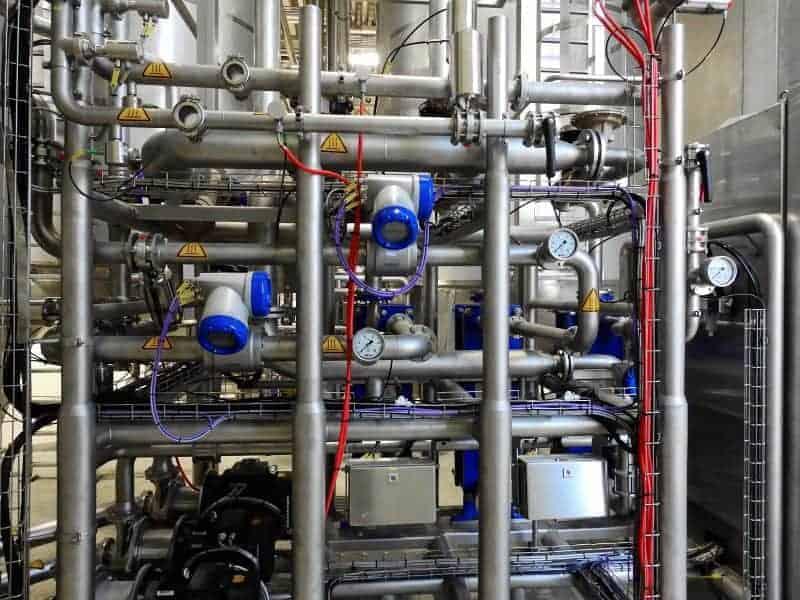Sulphuric acid goes by many names, including oil of vitriol, sulfuric acid, and hydrogen sulphate. But what is sulphuric acid?
Sulphuric acid is a strong mineral acid with the chemical formula H2SO4 (it is composed of sulphur, hydrogen, and oxygen). It has a pungent smell, and is an oily, colourless, heavy liquid which is highly reactive and corrosive - it should be handled with care, even when it has been diluted. It sometimes has dye added to it during manufacture to identify it as a hazardous chemical.
An inorganic chemical, sulphuric acid is soluble in water at all concentrations, and releases heat in an exothermic reaction when diluted. In high concentrations, it has dehydrating and oxidising properties, and it is also hygroscopic, which means that it easily absorbs water vapour from the air.
Properties of Sulphuric Acid
As it’s a strong acid, sulphuric acid reacts with most bases to produce the associated sulphate.
To give an example, when you mix sulphuric acid (H2SO4) with copper oxide (CuO), copper sulphate (CuSO4) is produced:
CuO + H2SO4 → CuSO4 + H2
Sulphuric acid is also used to extract salts from weaker acids. For example, reaction with sodium acetate (CH3COONa) can produce acetic acid (CH3COOH) and sodium bisulphate (NaHSO4):
H2SO4 + CH3COONa → NaHSO4 + CH3COOH
Manufacturing Sulphuric Acid

It is estimated that over 260 million tonnes of sulphuric acid were produced worldwide in 2018, which clearly shows that there are many uses for this chemical. The process of manufacturing sulphuric acid can be loosely broken down into four stages:
- Extracting the sulphur
- Converting sulphur to sulphur dioxide
- Converting sulphur dioxide to sulphur trioxide
- Converting sulphur trioxide to sulphuric acid
Uses of Sulphuric Acid
There are many uses for sulphuric acid across a range of industries, including:
- Lab testing and analysis
- Automotive - it’s an acid used in car batteries
- Iron and steel making - to remove oxidation
- Chemical manufacturing - as a raw material in the production of other chemical solutions
- Petro-chemical refining
- Paper production
- Agriculture - in the production of phosphate fertilizers

Health Effects of Contact with Sulphuric Acid
Long term exposure to low concentrations of sulphuric acid or short term exposure to high concentrations can cause detrimental effects to health.
Exposure to sulphuric acid can be through inhalation, ingestion, and skin contact. Inhalation causes irritation or even chemical burns to the respiratory tract, nose, throat, and lungs. It can be fatal. Ingesting sulphuric acid can also be fatal, or cause severe and permanent damage to the digestive system. Skin or eye contact can cause terrible chemical burns, especially as it reacts so strongly with water in the skin. Sulphuric acid is also a known carcinogen. It should always be handled with caution.
At ReAgent, we supply sulphuric acid in concentrated and standard forms as well as in reagent solutions. We also offer a range of pack sizes, from 2.5L to 1000L and in batches up to 5000L. If you would like to discuss your requirements, just contact one of our friendly team today.


